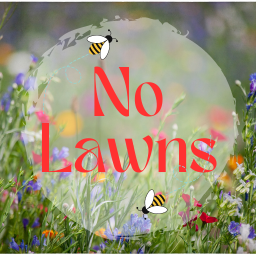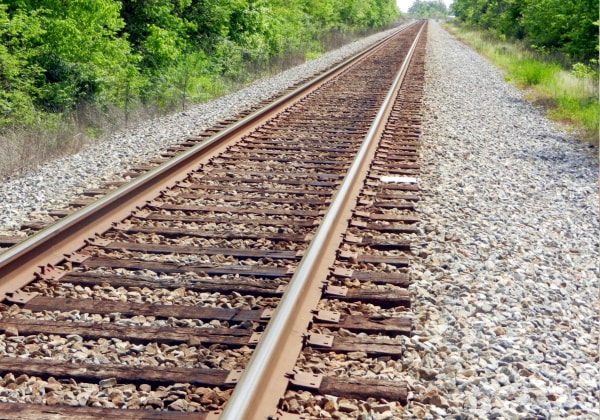I write science fiction, draw, paint, photobash, do woodworking, and dabble in 2d videogames design. Big fan of reducing waste, and of building community
https://jacobcoffinwrites.wordpress.com
@jacobcoffin@writing.exchange
- 33 Posts
- 175 Comments

 2·7 days ago
2·7 days agoThanks, I’ll definitely include that kind of dock/railings, still figuring out how to add greenery. I might shuffle the buildings around to make some room for a park
 2·12 days ago
2·12 days agoThank you!! I very much want to ground the campaign (and solarpunk fiction in general) in worthwhile, usable information, at least to the extent that I can learn/present it accurately! I’d very much like to help people learn about real-life illegal dumping tactics, watersheds (and how they’re frequently split by borders, and their importance to humans and habitats), and getting to add a basically-functional understanding of soil testing (possibly just minus sending samples away for a lab, unless we use drones for that) is a great opportunity.
I’m really looking forward to seeing how they’ll investigate - will they focus on old records? Oral histories from locals who were around at the time? Scientific test kits of modern soil? Some combination? Will they consider erosion and the sites’ proximity to the town’s three watersheds to narrow their options? Will they think of something completely out of left field and leave me scrambling to provide useful info?
 5·13 days ago
5·13 days agoI’m still working on the adventure module for Fully Automated! but I’ve definitely slowed down a bit. I know someone who does environmental restoration IRL so I want to work with them to add more information on testing sites for contamination, and to maybe try and build out a minigame around it. Then I have to write up one set of characters (build out descriptions and personalities and goals for them) and then go through and start adding all the game mechanics stuff. Right now, the campaign is essentially system-less. You could drop it into anything from GURPS to FATE but you’d have to work out the character stats etc that come into play when the dice start rolling. My goal is to stat out all the characters I’ve written descriptions for (which in FA includes a bit more history than I’ve currently got for some of them) and to script the handfull of possible combat encounters.
Outside of the game, I’ve finished a photobash of a solarpunk cargo ship and been doing research on other possibilities for solarpunk shipping. I’ve also had some awesome discussions here on slrpnk.net about things folks would like to see in scenes of ships, boats, and coasts, and about what they’d like to see in depictions of cities in wet areas (which many cities are or will be).
Most of my solarpunk projects start with a sort of input-gathering stage these days.
I’ve also been putting together a list of parts from cars which can be used in other (hopefully more solarpunk) ways. This is part of my ongoing attempts to get more reuse in solarpunk media - just trying to make including it easy for writers and artists.
So that’s it, a lot of discussion, one bit of art, and some incremental progress on the campaign.

 3·15 days ago
3·15 days agoNice! I’ll check that out!

 4·15 days ago
4·15 days agoThanks, that makes sense on both topics, they’re definitely going on the list!

 4·15 days ago
4·15 days agoThat’s a good list, thank you! I have a couple questions you might be able to answer:
Could you elaborate on the relays? I don’t know anything about them yet (in their intended use or alternatives). Though I am reading up on them.
I know there’s a some benefit in running 12v appliances (intended for campers) with solar panel setups because you don’t have to convert from DC to AC then back to DC at the appliance. Would that work for just using a car’s AC unit to cool a room, or are they built too specific to a car or not efficient enough to justify the work?
Thank you!!

 3·15 days ago
3·15 days agoThat reminds me - inside the rubber squeegee part is a long thin strip of good quality spring steel. Lockpicking folks like it for making tools, diy gun folks sometimes use them to make the extractor. I honestly don’t know what to use the rest of the wiper for.

 5·15 days ago
5·15 days agoThis is a great list with a bunch of stuff I wouldn’t have thought of - the transmission reuse is a cool idea!
I think some LED headlights are goood for growing plants. I remember some local news panic piece from years ago about how criminals were stealing headlights for their grow ops. A quick search online confirmed they work fine (probably not worth stealing though) and this post I think suggested a couple other car parts alternative uses I’ll have to go back and get later: https://www.rollitup.org/t/is-it-possible-to-convert-a-headlamp-into-a-grow-light.496815/
Thanks again!

 3·15 days ago
3·15 days agoThat’s a great example, thank you!

 5·22 days ago
5·22 days agoThe question of how to make migrations as pleasant as possible and rebuild as much of the physically embodied culture that was left behind as possible is one that is very relevant right now, so I would love to see you make a postcard of a migrant town, if you don’t already have one. If you can show how even migration can be a place of solarpunk joy, then suddenly the people of New Orleans do have a realistic joyful future despite the bleak prospect of evacuation.
This is a heavy topic with some pretty high stakes but it’s going on my list. You’re right that it’s something worth rendering, it’s art we might need, though TBH I hope someone better qualified than me gets to it first.
If you’d like to discuss how these places and experiences should be represented sometime, I’d definitely be interested. I know I’m usually unqualified to make these scenes (aspirational fiction requires so much more knowledge to do well and solarpunk scenes often involve a terrifying mix of civil engineering, history, cultural knowledge, plant knowledge, city planning, accessibility outreach, vehicle infrastructure, and more) but I’m profoundly unqualified to say much of anything about the experiences of refugees and migrants. That’ll be something to work towards through research and conversation, and perhaps to carefully reference in small scenes in prose fiction etc at first. References to Little New Orleanses and similar neighborhoods seem like a good place to start, with more detail in time.
Thanks for talking about this stuff with me. I really appreciate it!

 4·22 days ago
4·22 days agoThat’s something I’ve been wondering about - I live in a place with lots of ledge to anchor foundations to (or to get in the way of basements, depending on your situation and budget). I know skyscrapers drive in huge piles for support which I think aims for that supportive material underground? I know from researching bunkers that in other places the ground is kinda moving steadily, which can roll or twist unprepared or poorly designed structures. I’ve seen that New Orleans for example has some skyscrapers but just having them doesn’t necessarily mean building them is a good long term plan and that the ground will support those kind of structures.

 3·22 days ago
3·22 days agoThis is so cool! Thank you - this definitely gives me a place to start

 4·22 days ago
4·22 days agoI don’t disagree - I don’t tend to have much sympathy for folks who build in flood planes and end up getting wet, but then again, I’m blessed to live in a region largely free from hurricanes, tornadoes, earthquakes, wildfires, volcanos, and floods. I suppose much of the United States wouldn’t pass my ‘‘so don’t build there, idiot’’ test. The folks who do obviously look at those risks differently than I do, consider their needs, their love of a place, a lack of available housing, opportunities, etc, and probably dozens of other factors when making that decision. I definitely understand loving a place and wanting to preserve it.
I think we’ve also seen the way culture fragments and changes and is lost when its place vanishes. I don’t know that a New Orleans diaspora would be able to preserve or rebuild everything that makes the city special to the people who live there now, and I’m not comfortable just kind of telling them to deal with it, even if it seems inevitable to me now.
I’m not sure what degree of realism I’m aiming for in this art, even after a doing this series for a year. My outlook on our near term future, (when I let myself think about it) is quite bleak. The postcards are kind of an attempt to focus on the potential for something better, to talk about possible options, and to emphasize the aspects of solarpunk I love and to introduce people to them. I want the scenes to feel aspirational and attainable. And in a place (country/national discourse) where a large swath of the population is fearfully/enthusiasticly examining any leftist media for glimmers of top-down, authoritarian conspiracies, I’m aware that pointing out ways things are going to get bad looks to them like a celebration of the end of their comforts etc. And that that can drive people away from solarpunk and from possible solutions. So I don’t know, I guess from a messaging standpoint, at the moment, I’d rather emphasize adapting to changing conditions and reconsidering our current ways of doing things in order to talk about those impending problems and what we’ll do in response. I’ve done some other scenes of deconstruction and rewilding but I try to keep them mostly to cultureless mcmansion suburbs rather than working class cities. I’m not really comfortable shrugging and saying it’s pointless to try to preserve what we can of something parts of the audience care about.
I want to emphasize that I’m talking about the tone of this particular postcard art series, and trying to find my own goals for it, and that I don’t think you’re being unrealistic, exactly. I’ll keep the difficulties of the preservation aspect in mind.

 4·22 days ago
4·22 days agoI’ve seen raised houses but not many versions of bigger city buildings - if you find any I’d love to reference more examples in the art!
I’ve seen a few examples of parking garage conversions. I think all are top-down professional things so they don’t have the same range of materials or casual attitude towards building load as this one, but some look a bit similar.

https://www.axios.com/2019/10/30/the-future-of-parking-garages
There’s also this interesting one that goes less dense on the interior space in favor of more common areas, almost like tiny yards to go with the tiny houses: https://www.axios.com/2019/10/30/the-future-of-parking-garages

 5·22 days ago
5·22 days agoBreakers are a good idea (or making it clear the channel is a narrow one). I’d like to show water agriculture and a ferry too if possible. One of the reasons I struggle with cityscapes is the scope creep - I keep wanting to add one more ideas until the image is overcrowded, awkwardly arranged, or has a funny aspect ratio. Then again, this sort of perspectiveless side view is a personal favorite because it simplifies the art tremendously. Maybe I’ll try doing a set that can be arranged together horizontally to form one wide image…
Thanks for the rec on Bangkok, that’s a really good idea and I’ve got a bunch of reading to do. Are there any favorite water bus designs in particular (or anything else) you think I should make sure not to miss? Thanks again!

 4·22 days ago
4·22 days agoThank you for the name (genre?) recommendation! I had a sense of the kind of image I was referencing with these but not a name for it. Often, looking up the type of art I want to make solarpunk versions of is a huge source of inspiration and one of my favorite parts of the process! I enjoyed stuff like this as a kid but I don’t know if I can think of a name for it. It’s fun to look through them again!
And thanks! I definitely enjoy trying to show reuse, repurposing, and a mix of old and new.

 3·22 days ago
3·22 days agoGood point on the dolphins!
The amphibious public transit idea came from another discussion where someone suggested them so they could double as a fleet of rescue/evacuation vehicles. They basically wanted sturdy buses that wouldn’t stall when traversing a few feet of water, and which didn’t pose as much risk of getting stranded. I don’t know if that makes them any more practical or if a flood-prone city would just maintain a fleet of buses and a fleet of boats for rescue situations. Duckboats would almost definitely be harder to maintain than either one separately, but they might justify the cost if it means they’re getting their money’s worth by using them normally for public transit?
I think you’re absolutely right that a ferry connection would be easier to set up and maintain.

 4·22 days ago
4·22 days agoI’ll look into Cataclysm Dark Days Ahead though to be honest, I don’t really play games. I might be able to convince my SO who does to take a look though - I sometimes watch them play.
I’ve heard the wisdom around boats before, but I was thinking of houseboats because that’s a thing some people do IRL, and I like to include different lifestyles in the art when I can. TBH, given some of the drama I’ve read around rich people trying to get houseboats banned from mooring in public waterways near their private beaches, I was under the impression it was an economical way to live, though that might just be the case in some modern-day ultra-expensive coastal cities.
Ropeways are something I mostly know from ski mountains (my area is lousy with them) but I was surprised to learn about how much they’re used elsewhere for public transit - rich areas like the Alps definitely use them, but they seem to show up a bunch in the Middle East, South East Asia and Central America, where I don’t know that they necessarily guarantee rich surroundings (there was a somewhat famous rescue a year or so back in Pakistan when one broke while high over a valley). I don’t doubt the mechanical complexity (see: recent accidents), and I’ll admit I’m probably too fond of them as a concept for steady public transit that crosses rough terrain well, but I don’t know that alternatives like entire train lines or buses would have a lower impact. For all I know they do. I aim to balance the environmental footprint (including largely unseen parts like manufacturing and maintenance) against depicting places people might like to live.
100% with you on the fertility of the soil in river basins, and depictions of homesteads/uses of heat.
I respect folks who can picture the very long long term future, but to be honest, even positive depictions of it don’t feel very actionable to me. I’m not a scientist, researcher, inventor, so the hundred-thousand-year future feels pointlessly out of reach, especially with how bad things seem likely to get in the near term. I want to make stuff that inspires at least a little hope and ambition for today and tomorrow - and to depict scenes that make people think think, “why aren’t we doing that?” or “could that work?” I think the aspirational goal is the same, I’m just more focused on doing the best we can in the next few years and emphasizing any positive progress over perfection.
Thanks for all your input, I really appreciate it

 6·22 days ago
6·22 days agoThat’s a really good point! People need a reason to use them despite the cool factor. I’ll have to think on that.
I was kind of picturing these as a network of wide balconies/bridges/extra-wide fire-escape type walkways rather than full levels (not that the sketch made that clear) which would mostly be used seasonally. Like they might see some use for shortcuts etc when its dry but if the place floods for weeks or months(?), they’d be important for getting around. During that time the lower streets might be treated a bit like canals and each building an island. I’m kind of trying to imagine designs where what would be a city-wrecking flood today surges up and everyone grumbles about it but otherwise basically goes about their business.
I don’t know how feasible that is, or how well a given society would maintain a public resource that sees sporadic use much of the year, but that’s the hope. I’m going to look up the elevated walkways you mentioned, I’m very curious about differences in their implementations and if there are any positive ways to incentivize use of a separate level (rather than just taking the ground away). Thanks for bringing that up!






I appreciate that a significant portion of the 40k universe’s problems aren’t actually humanity’s fault.